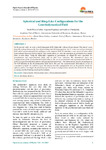
Please use this identifier to cite or link to this item:
http://ricaxcan.uaz.edu.mx/jspui/handle/20.500.11845/529Full metadata record
| DC Field | Value | Language |
|---|---|---|
| dc.contributor.other | 0000-0002-1478-7946 | es_ES |
| dc.contributor.other | 0000-0001-5324-1834 | es_ES |
| dc.contributor.other | https://orcid.org/0000-0001-5324-1834 | - |
| dc.contributor.other | https://orcid.org/0000-0002-1478-7946 | - |
| dc.coverage.spatial | Global | es_ES |
| dc.creator | Perez Carlos, David | - |
| dc.creator | Espinoza, Augusto | - |
| dc.creator | Chubykalo, Andrew | - |
| dc.date.accessioned | 2018-06-12T16:28:14Z | - |
| dc.date.available | 2018-06-12T16:28:14Z | - |
| dc.date.issued | 2018 | - |
| dc.identifier | info:eu-repo/semantics/publishedVersion | es_ES |
| dc.identifier.issn | 1742-6596 | es_ES |
| dc.identifier.uri | http://hdl.handle.net/20.500.11845/529 | - |
| dc.identifier.uri | https://doi.org/10.48779/7hxv-jr76 | - |
| dc.description.abstract | In the present work, we write a brief exposition of the Jefimenko’s theory of gravitation. This theory arose from the analogy between the laws of gravitation and electromagnetism, that is, exist a second gravitational field called cogravitational field, analogous to the magnetic field. We introduce a new system of units called Gravitational Gaussian System (GGS). This system allows us write the equations of gravitation in a simple form to solve them. Using the Jefimenko’s equations of gravitation, we obtain the wave equations for gravitational and cogravitational fields and we find wave solutions. We demonstrate there are configurations of the gravitodynamical field (that is, the set of gravitational and cogravitacional fields) in form of co gravitational field spheres and gravitational field rings. This phenomenon must be an analogue of the ball lightning in the electromagnetic field, but in this case the cogravitational field spheres serves as containers of matter (it could be a gas). We analyze how this configuration acts on the particles inside the spheres, and we investigate the physical properties of such configurations, namely, how behaves the density of energy and the Pointing vector of this solution. | es_ES |
| dc.language.iso | eng | es_ES |
| dc.publisher | Sryahwa Publications | es_ES |
| dc.relation | http://www.sryahwapublications.com/open-access-journal-of-physics/ | es_ES |
| dc.relation.uri | generalPublic | es_ES |
| dc.rights | Atribución-NoComercial-CompartirIgual 3.0 Estados Unidos de América | * |
| dc.rights.uri | http://creativecommons.org/licenses/by-nc-sa/3.0/us/ | * |
| dc.source | Open Access Journal of Physics, vOL. 12, Núm. 1, 2018. | es_ES |
| dc.subject.classification | CIENCIAS FISICO MATEMATICAS Y CIENCIAS DE LA TIERRA [1] | es_ES |
| dc.subject.other | Cogravitation | es_ES |
| dc.subject.other | Gravitational waves | es_ES |
| dc.subject.other | Gravitodynamical field | es_ES |
| dc.title | Spherical and Ring-Like Configurations for the Gravitodynamical Field | es_ES |
| dc.type | info:eu-repo/semantics/article | es_ES |
| Appears in Collections: | *Documentos Académicos*-- UA Física | |
Files in This Item:
| File | Description | Size | Format | |
|---|---|---|---|---|
| 2018OpenAccessJournalPhysicsV2_11.pdf | 1,08 MB | Adobe PDF |  View/Open |
This item is licensed under a Creative Commons License
